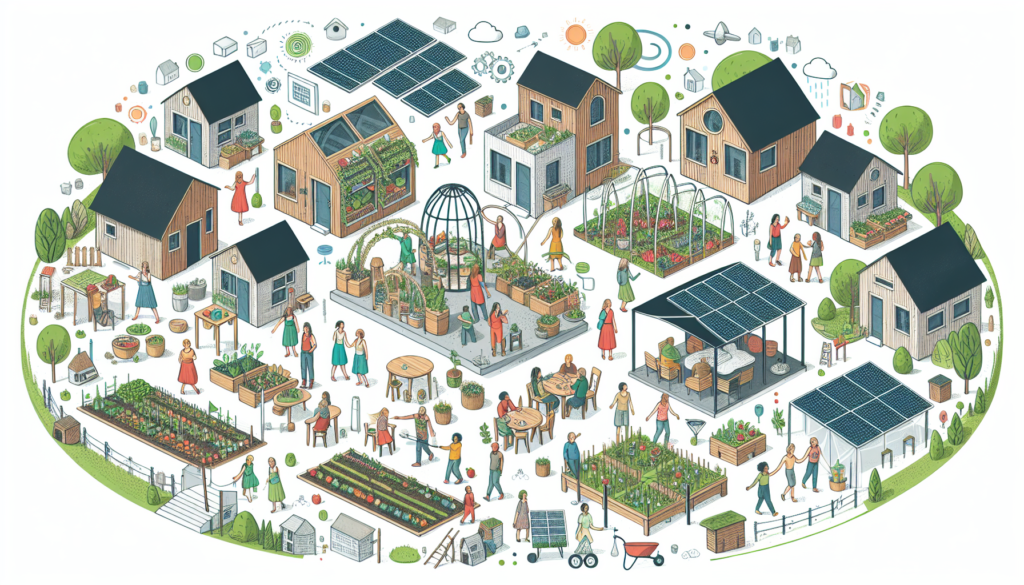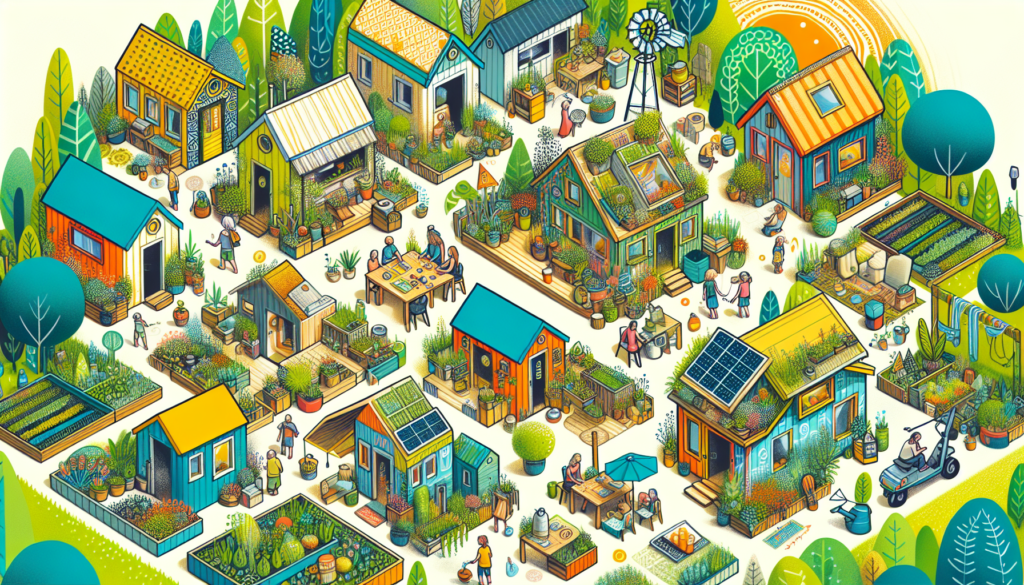Imagine living in a community where simplicity is celebrated and neighbors are like family. A place where tiny homes come together to create a vibrant and flourishing environment. In this article, we will explore the key factors that contribute to the thriving nature of a tiny home community. From strong connections and shared values to sustainable living and a strong sense of belonging, discover the magic that makes these communities truly special. Join us as we embark on a journey to unveil the secrets behind what makes a tiny home community thrive.
Design and Layout
Functional and efficient use of space
A thriving tiny home community starts with thoughtful design and layout. Every square inch of space is valuable, and it is essential to maximize it effectively. Whether it’s clever storage solutions, multi-purpose furniture, or built-in organization systems, the design should prioritize functionality and efficiency. This ensures that residents have enough room for their essentials while minimizing clutter and maximizing comfort.
Well-designed common areas
In addition to individual homes, well-designed common areas are crucial for fostering a strong sense of community. These shared spaces serve as gathering points where residents can socialize, relax, and engage in activities together. It’s important to have common areas that cater to different needs and preferences, such as a community center for events, a park for outdoor activities, or a communal kitchen for shared meals. Well-designed common areas encourage interaction, facilitate connections, and contribute to a vibrant community atmosphere.
Incorporation of green spaces
Adding green spaces within a tiny home community enhances its aesthetics, improves air quality, and promotes overall well-being. Trees, gardens, and other natural elements bring joy and tranquility to residents’ lives and create opportunities for gardening, meditation, and outdoor recreation. Green spaces can also serve as communal areas for community events or simply as places for residents to connect with nature and unwind. By incorporating green spaces, a tiny home community becomes more than just a collection of houses – it becomes a thriving and thriving ecosystem.
Thoughtful traffic flow
Another key aspect of a thriving tiny home community is thoughtful traffic flow. It’s essential to design streets and pathways to accommodate the needs of pedestrians, bicycles, and potentially even small electric vehicles. Prioritizing safety and accessibility ensures that residents can navigate the community without feeling overwhelmed or restricted. Clear signage, well-maintained roads, and designated parking areas for visitors contribute to a smooth flow of traffic and foster a sense of security within the community. Ultimately, thoughtful traffic flow promotes a sense of convenience, making it easier for residents to connect with their neighbors and access the community’s amenities.

Sense of Community
Regular community events
A thriving tiny home community is built on a strong sense of community. Regular community events play a vital role in creating connections and fostering a sense of belonging among residents. These events can range from potluck dinners and movie nights to community-wide yard sales or fitness classes. By providing opportunities for residents to come together, share experiences, and build relationships, regular community events contribute to a flourishing and vibrant community spirit.
Shared resources and amenities
Shared resources and amenities are essential cornerstones of a thriving tiny home community. By pooling their resources, residents can access shared facilities that they might not have individually, such as a gym, laundry room, or community garden. Shared amenities encourage interaction and create opportunities for residents to use their skills and talents for the benefit of the community. Shared spaces also foster a sense of ownership and responsibility, as residents work together to maintain and improve them.
Established communication channels
Open and effective communication is key to a thriving community. Established communication channels, such as community newsletters, online forums, or social media groups, provide a platform for residents to share information, ask questions, and voice concerns. These channels facilitate the exchange of ideas, encourage collaboration, and strengthen the sense of community. By providing a space for residents to connect and engage, established communication channels contribute to the overall well-being of the community.
Active community involvement
A thriving tiny home community thrives when residents actively participate in shaping its future. When residents are involved in decision-making processes and actively contribute their skills and ideas, they develop a sense of ownership and pride in their community. Encouraging community involvement can be done through regular community meetings, committees, or task forces focused on specific issues. Active community involvement empowers residents, fosters a sense of responsibility, and ensures that the community’s needs and concerns are heard and addressed.

Affordability and Accessibility
Reasonable rent or ownership costs
Affordability is a vital factor in a thriving tiny home community. Whether it’s renting or owning, the costs associated with living in a tiny home should be reasonable and within reach of a diverse range of income levels. This allows individuals and families with different financial backgrounds to access the benefits of living in a tiny home community without excessive financial burdens.
Availability of financing options
Supporting affordability, the availability of financing options is crucial for those who wish to own a tiny home in a community. This can include partnerships with local banks or credit unions that offer specialized loans or financing programs tailored to tiny homes. By providing accessible financing options, the barriers to homeownership are reduced, allowing more individuals to pursue their dream of living in a tiny home community.
Proximity to essential services
To thrive, a tiny home community should be conveniently located near essential services. Being within proximity to grocery stores, healthcare facilities, schools, and public transportation makes daily life more accessible and convenient for residents. Additionally, having nearby community centers or cultural institutions enriches the community experience, providing opportunities for recreation, learning, and socializing.
Accessible transportation
For a tiny home community to thrive, accessible transportation options are vital. This can include well-connected public transportation systems, bike lanes, or pedestrian-friendly pathways. By providing convenient transportation options, residents can easily navigate within and beyond the community, fostering connections with the broader neighborhood and reducing reliance on private vehicles. Accessible transportation enhances mobility, sustainability, and community connectivity.

